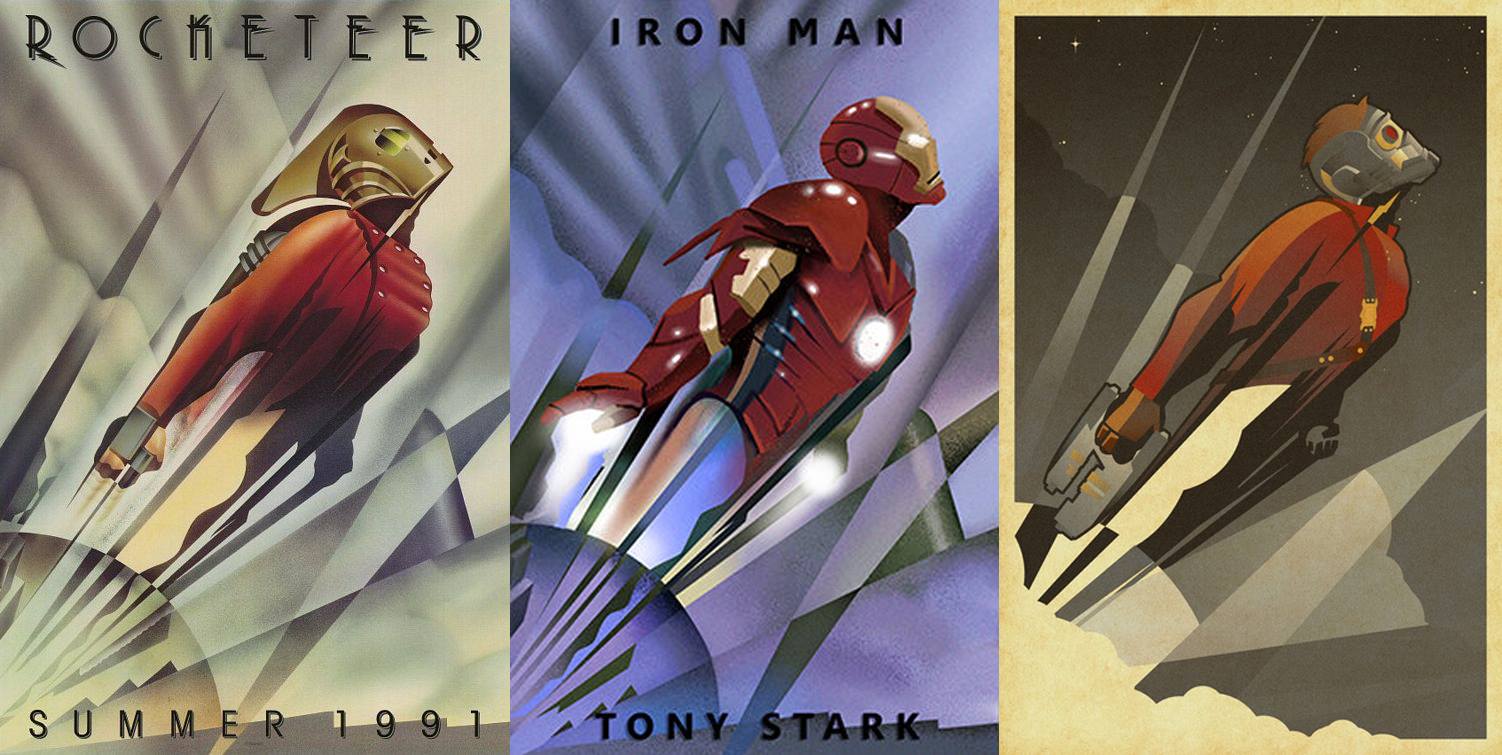
There was a story, I heard once, about a pair of twins who were separated at birth and given to two different families. These families were in different countries and had different lifestyles. Nothing in the socio-reflective learning aspects of these two twins was comparable. They both grew up to be very inventive and both strived to create ingenious and clever inventions. Both unknown that the other twin existed. One day, there were a couple of young inventors seated in the patents office. They were both awaiting interviews to claim a patent on their new invention. They both got talking, and found that through time that they were related and in fact the long lost twins separated at birth. However, this was not the remarkable aspect of the story. When they both mentioned they were at the patents office seeking a patent, they agreed to share evidence of their ideas. What was revealed, was that although they had never met prior, never communicated, never knew of the others existence or work, they had both managed to complete a design for the same exact thing. And arrived to patent it on the exact same day.
Now this maybe a wonderful story about the genetic connections between twins, a super story of chance and probability and so forth, but it is also an interesting lead into a discussion about originality and creativity. Yesterday, (August 16th, 2014) a discussion arose on a group board about what constitutes original, based around the evidence of two pieces of artwork, seen here on the right of the original, that evidently copy the original. The argument by one observer (who with no legal or artistic knowledge or care) seemed to feel obligated to make a mockery of the evidence presented simply based on the criteria of his limited opinion. He sited that nobody should site trendy and over used terms without knowing their meaning, or to be reactionary. He also went on to make several other claims that will be mentioned in this post, to highlight a growing issue in the creative field.
To begin with there will be a brief indicator laid out, to define what is the common issue in the growing idea less creative world. This is a basic definition of what copyright infringement is basically about;
Copyright infringement is reproducing, distributing, displaying or performing a work, or to make derivative works, without permission from the copyright holder.
What anyone entering into the field of creativity should be aware of, or even that matter, who has worked inside the creative field, is that there are different depths to a creative work. To begin with, and most important, there is the idea. Now, this is important smile because it is the core of the artwork. Without the idea the artwork fundamentally doesn’t exist. This was introduced to myself in a rather strange way, when I was a mere teenager walking around the Tate gallery, in London. It was when there was an exhibition of abstract and Pop art taking place. I remember well, standing in front of the original Lichtenstein’s Whaam! painting. Much of the exhibition is lost to me now, but one piece that was, and forever will be, a sticking point in my mind, was the brick on the log piece. Simple a wooden log, with a red brick placed carefully (one thinks) half way down the log. I remember we all stood there, looking. Whether surprise, whether amazement, whether some deep cerebral artistic connection to the artist’s message, it was never known. What came from it was the statement (which you hear a lot in art circles, and was an argument for the two Rocketeer copies) which was “but I could have done that!” Our teacher was good and quick to point out the great reasoning for its existence and to counter the claim, by saying; “but you didn’t, he did. And he was the first. And that is what is important.”
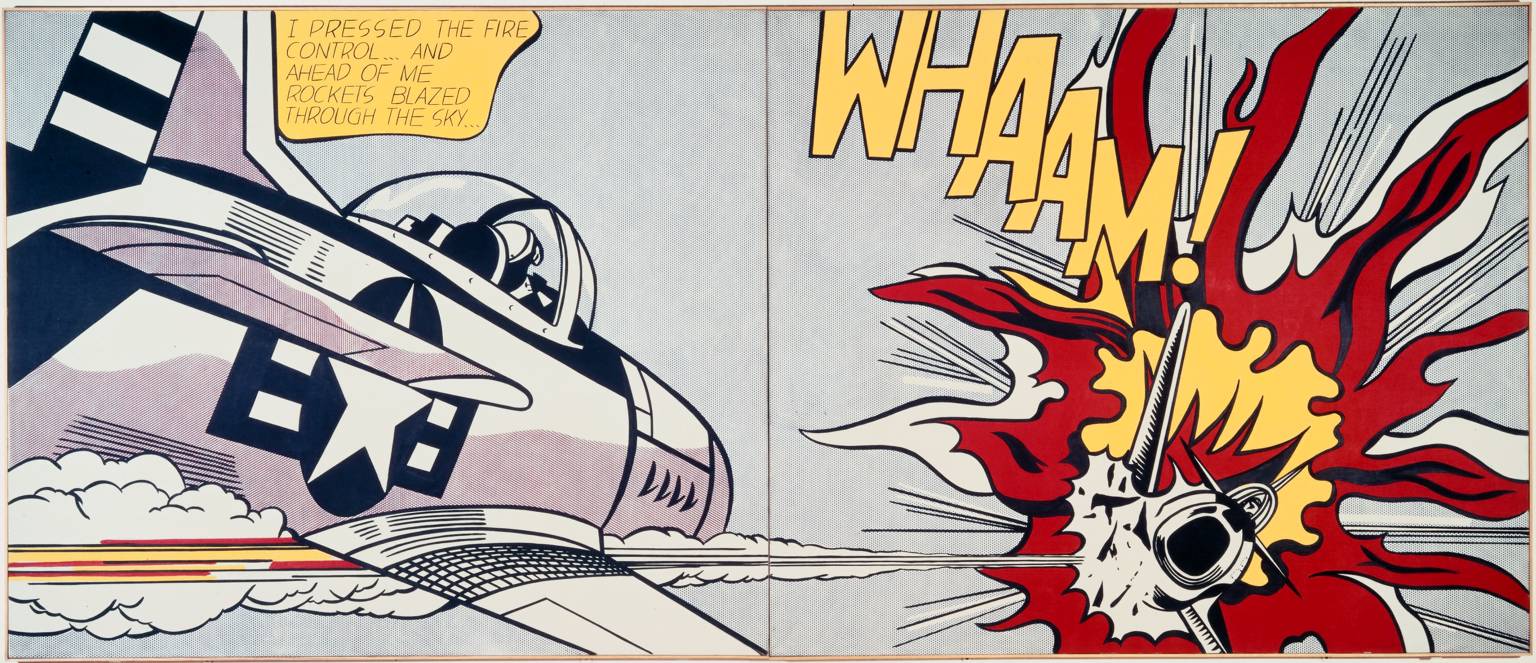
Being creative myself, I have also had the problem in seeking out new ideas. Not necessarily due to the fact that it seems like everything has been done before, but because of brain block, time constraints, and moods. There are ways to originate, and luckily during my Masters degree, I was introduced to one such method: Lateral Thinking. Lateral Thinking is a process, that may not start you off with an original concept, but at least gives method and function to allow the brain to seek out an original solution. One of the arguments of the Pop Art movement was that it seemed that everything had already been done before, so a mashing of that existing art would result in a new art. Luckily for the movement, they were the originators of the style and even though a great deal of the art was replicating other existing art, it was weak on the derivation. Take the Lichtenstein piece mentioned previously. This was a piece inspired by the aware comics of the 60’s. Great piece! And if you have stood next to it, like I have, you would see that it was monumentally big. This is in essence what makes it original, instead of a derivative as such. Taking an existing form and transposing it into a new medium, that in essence makes it new. This is an argument for fine art. When we look at commercial art, or applied art, there is a great barrier to cross in seeking originality. One reason being is that the scale tends to remain the same, and the medium form is close to exact of the original.
There is a trend in the world today, for people with an interest in creativity, to move out and feel able and willing to seek addition remuneration in their salaries, by making commercial art, and then placing it online for sale. This is the crux of the issue, and the battle ground for the copyright laws. Now the copyright laws are very complex and exhaustive to mention all here, but some points will be picked upon, and also a term that has later become inclusive in the copyright laws; Intellectual Property. Will be mentioned in cases where the term applies to being violated. To give a brief understanding of what IP (intellectual property) is, it is the basic right of protection of the idea. Previous to the inclusion into the existing copyright laws, ideas could be stolen, reworked and manipulated with recourse to complain or file suit. Now however, the having of an idea can be protected. Not that you can copyright or protect your brain matter. The transference of an idea into a physical form allows it to become protected, by the simple fact that your were the originator. Let’s say for example you were in a meeting at a big film studio, having lunch and without thought spill out an idea for a super movie script that turns the executives heads. By fact, if no disclaimers, such as you declare that was in confidence, or that the idea mentioned in the meeting was your property, and it was translated into physical form. Then the studio could go off make a bundle off that idea and you would not see a dime. However, if you make the precautions of having it in physical form before the meeting. Even if you never make your idea, and some time after that meeting, they make a blockbuster that is (even) a derivative of your idea, then you can make claim. That is how it works.
So, let’s look at the issues in these and many other pieces of commercial art. What constitutes the idea? The Rocketeer poster will be used as an example to explore the issues, mainly as that was the point of target in the whole commotion over copyright infringement. The idea in this case, was the solution to the art director’s request for a poster design for the movie. The transference of a concept into that form is evidence of the idea. The uniqueness of the compositional positioning of lines and forms, makes the idea original. There is no denying that there is a 20’s influence on the styling. This is due to the period of the movie, and the need to reflect it in the artwork. Copying a ‘style’ is not infringement, as you can’t copyright an era of time (like the twenties)! So, the new copies, are in fact derivatives of the original. Saying to yourself “I’m going to take (the already existing) Rocketeer poster and put Iron Man there instead”, is not an original idea. It maybe an idea, but it is not original. Why? Because obviously the piece (compositional) has been done before. This is deriving a piece of artwork from someone else’s idea. What would make it a new piece would be, let’s say, taking the style (Art Deco) and doing an Iron Man poster in that style, but in a different compositional aspect. Or, say, doing a Rocketeer poster, but from a new angle, more dynamic, etc. Taking the exact same form, lines, and even techniques, and transposing them onto something that the new artist considers to be original, and more damning, an original idea, is basically a simple case of copyright infringement.
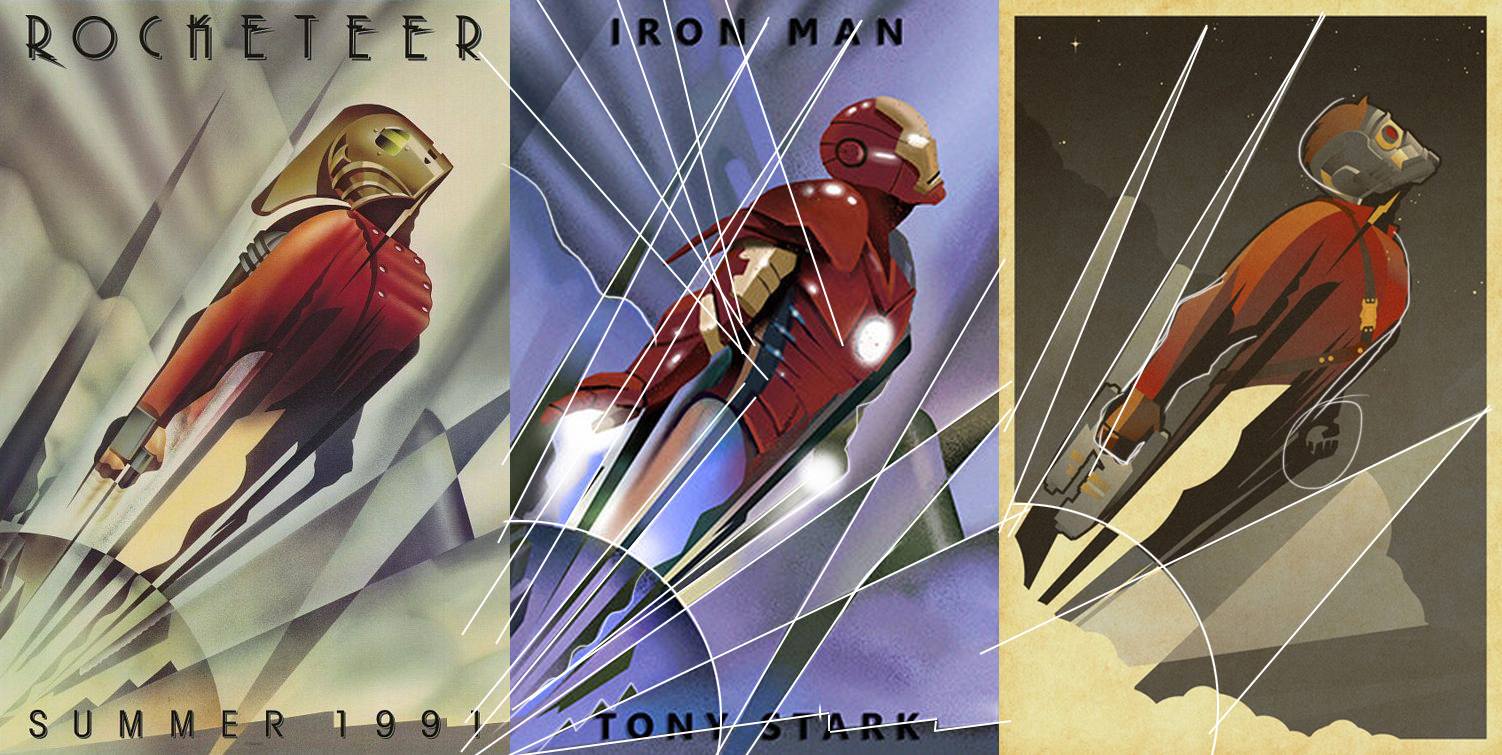
How can commercial artists, and hobbyists, get round this issue. Well the simple thing is not to copy. It was claimed by the provocateur, that the two artists in question in this case, may not have been aware of the original, and was just coincidental they had the same idea. There is no doubt that there is too much familiarity in all these pieces for them to be coincidental (like the twins). Also a note should be put, that changing the character included in the piece doesn’t make that piece new or original. Composition is protected by copyright laws as well, and these compositions are identical. One warning to would be fan art converter, moving into the world of commercial art. If you delve into the realms of glorifying your heroes into works of art, be cautious of licensing laws. Basically, big studios love to crack down on infringements. Disney Studio has it’s own department just for this. So, as the mentioned definition of copyright infringement indicates, “unless the original owner is aware of” then be cautious. The online site won’t protect you, and you are tackling the giants. Saying this, some originating artists love fan art, and if you contact them, they may give permission. However, it would be very surprising if an artist who’s original work is being exploited for a gain by another would indicate they are OK in letting that artist take his work, copy it and then make money from it. This is why the copyright law states that no work can infringe or use and existing piece for no less than fifty years after the death of the copyright owner, or originator.

Nothing is original these days. A cry by many folk, be they creative or not, and it has even been stated that the award winning aesthetics of Apple computers is a mere revamp of Dieter Rams 50’s brilliance. I was luckily at university with Jonathan Ives, and I am sure that in the theory aspects of the product course he was on, Dieter Rams was mentions. There is no real argument about being influenced by something. And this is the issue in the semantics of terms being thrown around. “Original” doesn’t mean “never been seen before”. That is like asking car designers to reinvent the wheel each time. Original simply comes down to some aspects that a creative person would/should go through each time they make a piece. Research, development, sketching, exploring. Now many worldly artists should know enough about the history of their subject to know if they have seen something before. Morality and reputation is a part of being a good artist too. It was claimed I was destroying the artists reputation by labelling them as copy cats in the argument of the Rocketeer poster. Please, I am making their lives more worse because they are copying someone. Surely that should be the damning aspect, not the fact someone points it out. Anyway, Lateral Thinking, as stated before, created by Edward De Bono, is an amazing method to seek out new forms, possibilities and ideas. To fall victim to saying, I can’t think of anything new, in my books means you haven’t spent enough time thinking. This is understandably an issue when commercial art requires deadlines. I have been in a situation recently to redesign new icons for an application. You ask yourself “how many times can you do an icon for login?” What you can do, and I tend to aim to do, is spend some time saying to yourself, I will do ten ideas, and they all need to be different. Even if different in derivation alone. That will result in some options.
Back to the main issue and to conclude. Art is under attack in many quarter. Whether it’s costing, originality, or simply being noticed in an ever growing market. However, unlike the scruple less money grabbing world of the non-aesthetic, there should be a degree of morality in the heart and mind of the artist. After all, would you like to see a piece that you originated being copied and sold online, when you know you didn’t make money from it, and the other artist is. Would you feel good? No, well then there is the answer. Understand the laws of copyright and try to originate by new methods being devised for creatives to seek new ideas. If all that fails, well turn to copying fashion! Fashion is classed as a utility application in design, and therefore can’t be copyrighted.

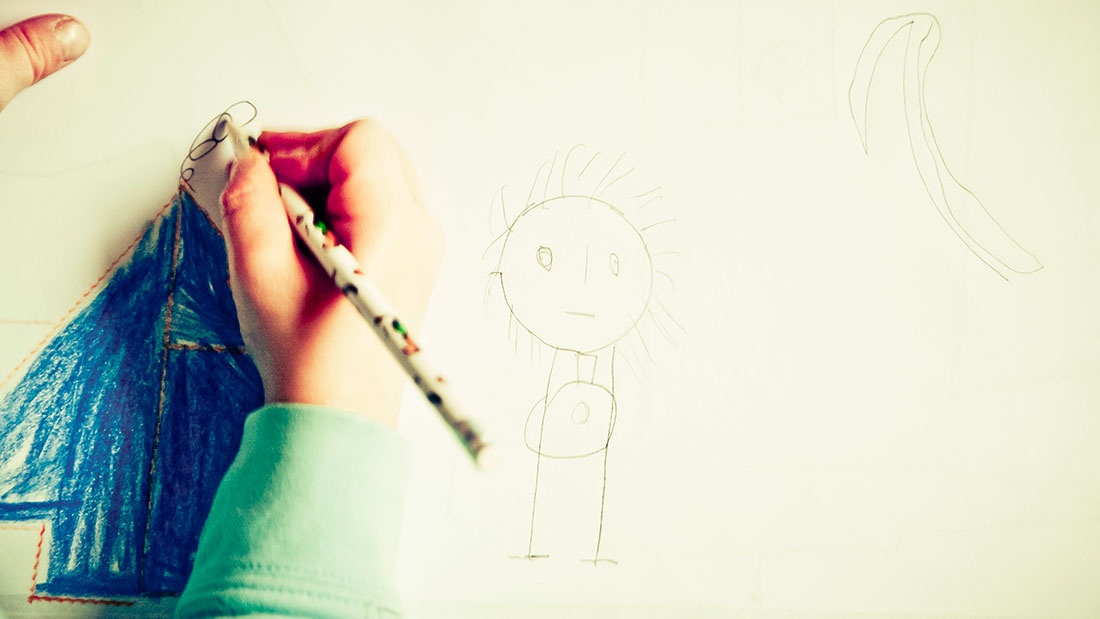










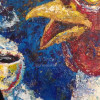
This blog was… how do you say it? Relevant!! Finally I have found something which helped me.
Cheers!